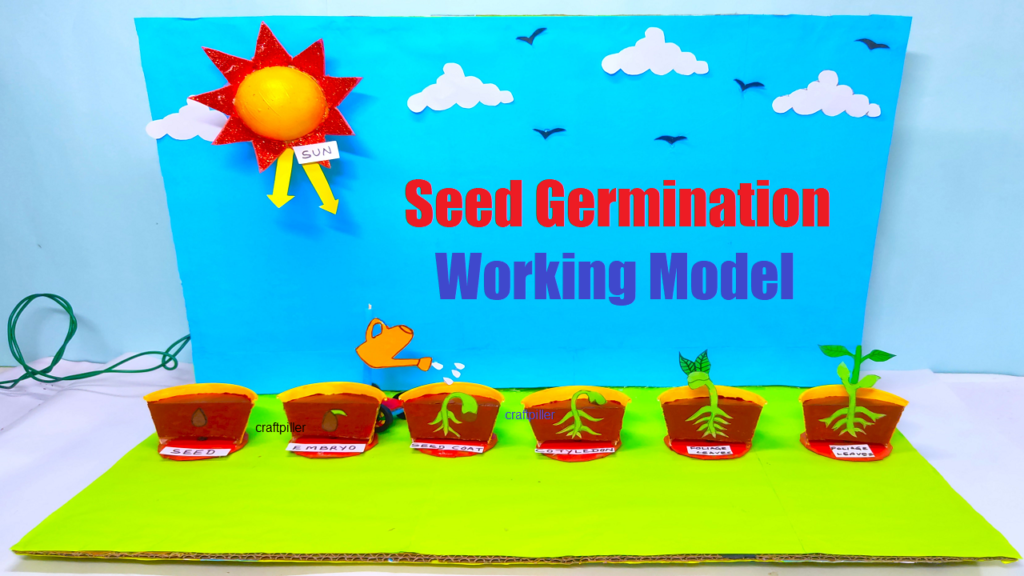A plant life cycle working model demonstrates the stages a plant goes through from seed to mature plant. It shows the process of how plants grow, reproduce, and complete their life cycle.
This model provides a visual representation of the stages of development, from germination to flowering and seed production.

Key Components of the Model:
- Seed: Represents the starting point of the plant life cycle, containing the potential for new plant growth.
- Soil and Water: These are essential elements for seed germination and plant growth. The soil provides nutrients, while water helps the plant absorb nutrients and perform photosynthesis.
- Seedling: A small plant that has just sprouted from the seed, showing the early growth stages of the plant.
- Mature Plant: A fully grown plant with leaves, stems, and roots. It is capable of photosynthesis and preparing for reproduction.
- Flowers: Represent the reproductive stage of the plant, where pollination occurs.
- Fruits and Seeds: After pollination, the flowers turn into fruits that contain seeds. These seeds will eventually be dispersed to start new plants.
How It Works(Plant life cycle working model):
- Seed Germination: The model starts with a seed placed in soil. When the seed receives water, it absorbs moisture and begins to sprout. The seedling pushes through the soil to emerge as a small plant.
- Growth: As the seedling grows, it develops roots, a stem, and leaves. These parts help the plant absorb nutrients from the soil and sunlight for photosynthesis, which is essential for its growth.
- Reproduction: The plant reaches maturity and begins to produce flowers. These flowers contain both male and female reproductive parts that facilitate pollination, either through wind or insect activity.
- Fruits and Seed Formation: After pollination, the flowers turn into fruits that contain seeds. The fruit protects the seeds as they mature.
- Seed Dispersal: Once the seeds are ready, they are dispersed by wind, water, or animals. The seeds fall to the ground, where they can germinate and begin a new life cycle.
Applications and Learning:
- Real-Life Insight: This model demonstrates the natural cycle of plant life, emphasizing the importance of each stage in plant reproduction and growth.
- Educational Value: It helps explain key concepts in biology, such as photosynthesis, germination, pollination, and seed dispersal.
This model is a great way to visually teach students about the life cycle of plants, making it ideal for biology projects or classroom learning.

